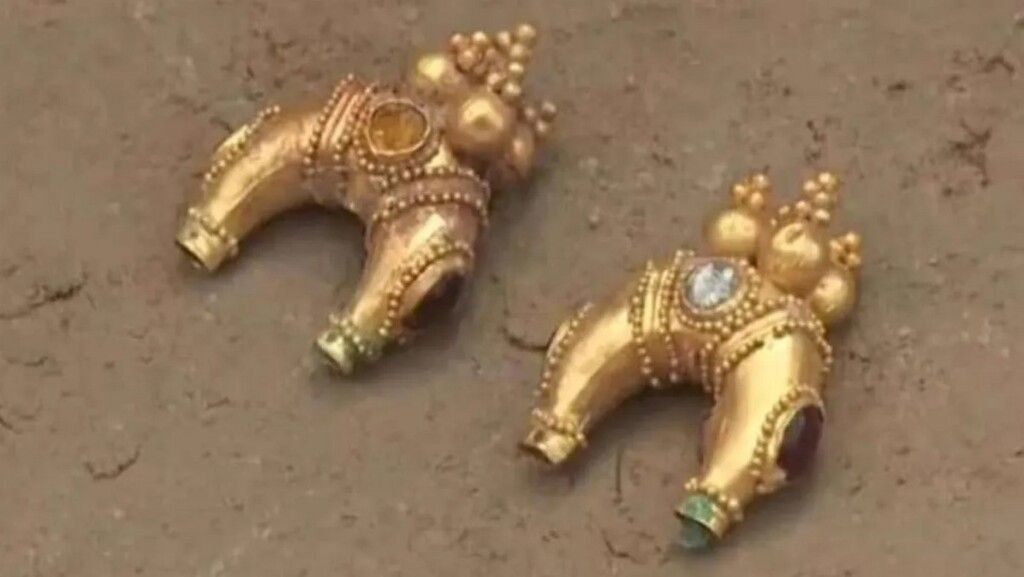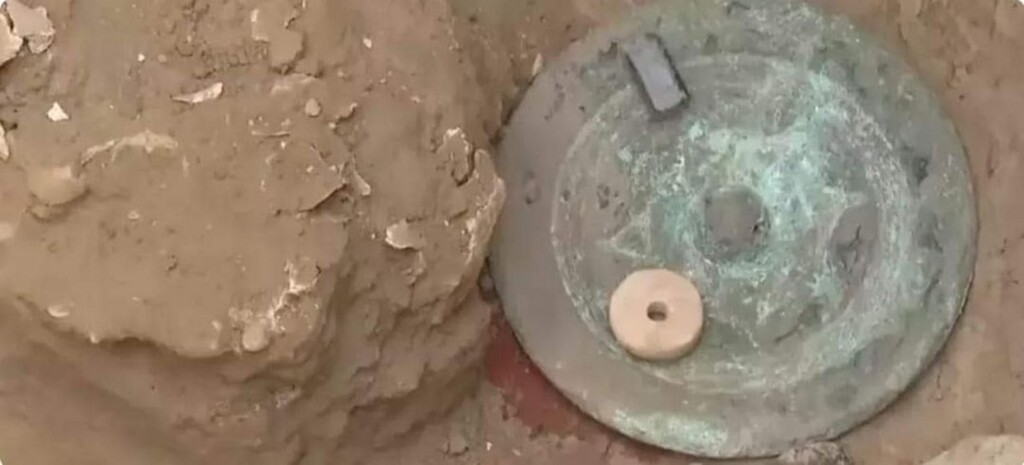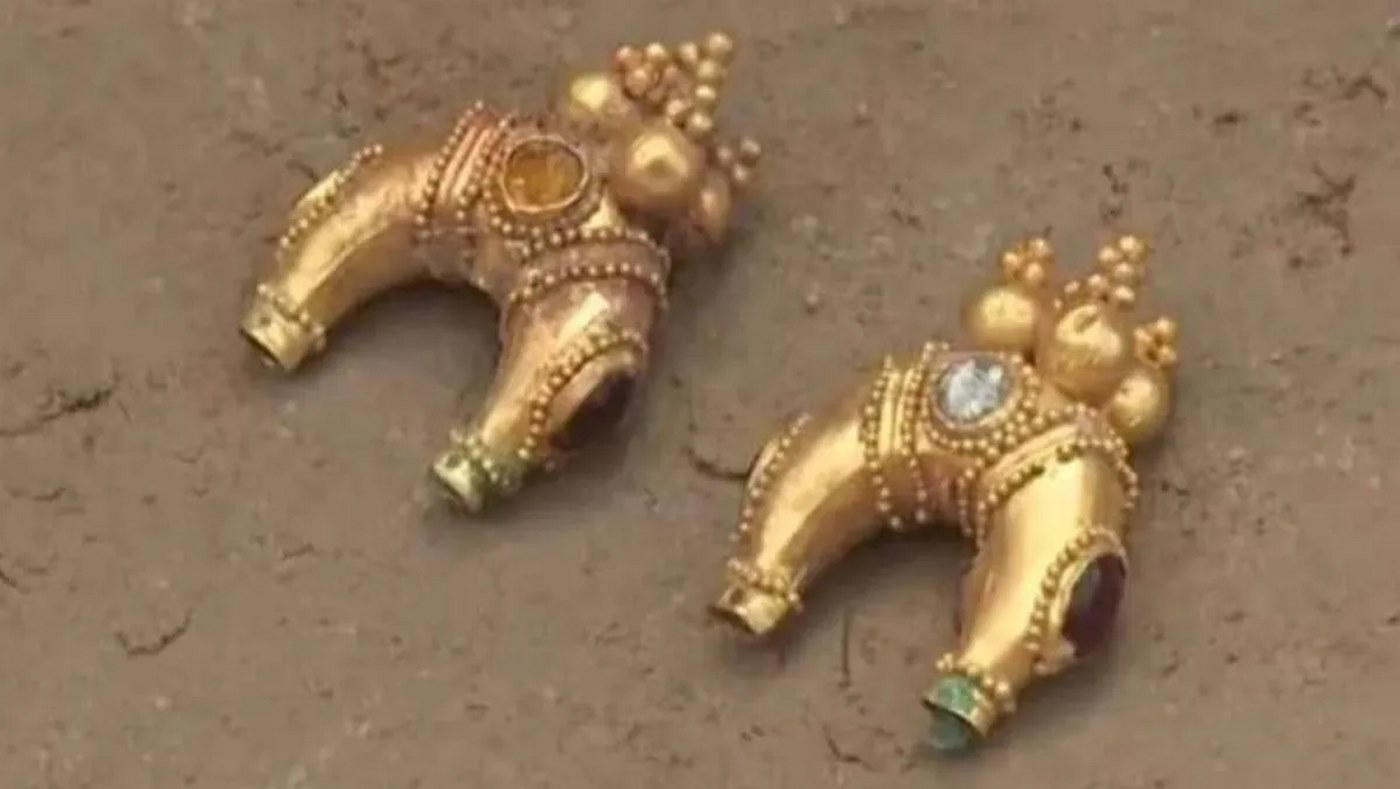
Of the many famous empires and states along the Silk Road’s Central Asian passages, few are more mysterious than the Kangju.
But in a stroke of fortune, the section of an ancient burial ground reserved for the nobility of this kingdom escaped the attention of looters for over two millennia, and a recent excavation from a university in Kazakhstan has uncovered evidence of wealth and prestige.
The Kangju state ruled an area in southern Kazakhstan for almost 1,000 years between the 5th century BCE and the 4th century CE. Of the three tombs found in the rural Karaaspan district of Kazakhstan’s region of Turkistan, two had been looted in ancient times, but a third whose contents were still intact yielded these golden earrings, along with a bronze mirror, arrowheads, beads, and other items.
The earrings are a clear sign of the kingdom’s wealth, while the mirror reflects more on their social connections.
“Previously, similar mirrors were found in the city of Tillya Tepe in Afghanistan, the center of the Kushan Empire, and in the burial places of the Sarmatian kings in the Southern Urals,” a statement from the Kazakh government read after being translated.
Circular with a hole through the center, the mirror was made in the Han Dynasty, the first modern Chinese imperial empire, and the one which established the first Silk Road. Connecting the Han capital of Xi’an with Rome, Kangju would have been an important stop on the most famous trail in history.
The earrings are crescent-shaped and are assumed to represent the Moon in polychromatic gold with turquoise and rubies. At the bottom are bunches of grapes which along with being a lovely decoration also reflected the sunlight in different directions.
PYRAMIDS IN KAZAKHSTAN: 4,000-Year-Old Pyramid Rises From the Soil of Kazakhstan–First of its Kind Ever Found on the Eurasian Steppes
The two pieces almost certainly indicate the tomb belonged to a noble lady, the statement says.
Expedition leader Aleksandr Podushkin, an archaeologist at Ozbekali Zhanibekov University which conducted the excavations, says Kangju—itself a Chinese name—was made up of a variety of Central Asian steppe peoples who are all better known than the kingdom they lived in.

The Sarmatians mentioned earlier from the regions of the Urals, Caucasus, and the Black Sea, the Xiongnu from northern China and the Tian Shan mountains, and the Saka people, who probably originated in Iran but eventually spread all throughout Central Asia and Siberia, would have each contributed to making Kangju a cosmopolitan center of Central Asian nomadic peoples.
MORE CENTRAL ASIAN DISCOVERIES: Historians Stunned: Uzbekistan Nomads Supplied a Third of the Bronze Used Across Ancient Mediterranean
A 2nd-century BCE historical text from the Han Chinese states that Kangju remained small for long periods, neither growing nor shrinking in wealth and influence. If this is the case, it was probably because several larger empires surrounded it, including the Xiongnu, the Parthians, and the Kushan Empire.
SHARE These Illuminating Discoveries Of Ancient Kazakhstan On Social Media…




















